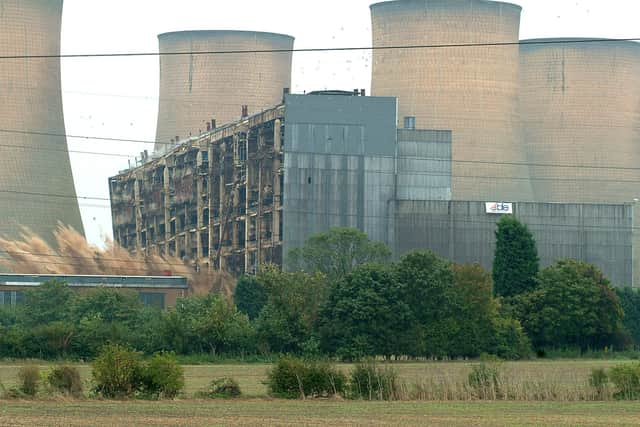Solar farm on Bassetlaw power station site could provide enough electricity for 11,000 homes
and live on Freeview channel 276
High Marnham Power Station closed in 2003 and the site was bought by JG Pears, a processor of animal by-products and food waste.
There are now plans to turn the site into a green energy hub, and a planning application has been submitted for the development of a solar farm on 58 hectares of land.
Advertisement
Hide AdAdvertisement
Hide AdThe proposals, submitted to Bassetlaw Council, outline the development of solar panel arrays, 12 medium voltage power transformers, one customer substation and access tracks.


Planning documents say: “There is an urgent and compelling need for the generation of renewable energy in the UK.
“Solar energy forms a significant part of the contribution towards the UK becoming carbon net zero, with wind and solar providing the predominant contributor to the UK’s electricity.
“This approach reflects wider Government policy and guidance which is designed to address the potential impacts of climate change, to ensure energy security, economic growth, and the reduction in using natural gas to heat properties.
Advertisement
Hide AdAdvertisement
Hide Ad“Permission is being sought for the development of a solar array including ancillary infrastructure on 58 hectares of agricultural land.
“There are a number of considerations which should be given significant weight in favour of planning permission being granted.
“Firstly, the generation of 42 megawatts of renewable energy is sufficient to power about 11,000 homes which would account for a considerable percentage of the dwellings in Bassetlaw.”
There have been 11 letters of objection from neighbouring houses, however, as well as Normanton on Trent with Marnham Parish Council
Advertisement
Hide AdAdvertisement
Hide Ad“The parish council supports the principle of renewable energy and the objection is based upon the impact of the scheme on local residents,” documents add.
“Objection was raised to the proposal on a number of grounds. Firstly, comments were raised in relation to other recent solar developments at Tuxford and Grassthorpe (Sutton on Trent) alongside a loss of agricultural land.
“Secondly, it was noted a buffer zone has not been incorporated into the proposal, as was shown in previously included in the draft Bassetlaw Local Plan.
“It was noted that the application site was not extended further east due to flood risk. The parish council noted that historically it was areas on the eastern side of the River Trent in Lincolnshire that typically flood first.”
Advertisement
Hide AdAdvertisement
Hide AdDocuments also reveal there are “drawbacks to the scheme” which include the loss of good quality agricultural land and the potential harm to several non-designated heritage assets.
Lincolnshire Council’s archaeology department also noted the site “lies within an area of archaeological potential associated with prehistoric, Roman, medieval and post-medieval activity”.
A number of additional surveys must now be provided to make sure there is no impact on any surviving heritage assets.
The harm to the identified heritage assets is expected to be “less than substantial”, planning documents add, and upon the cessation of energy generation, the site will be restored to its original condition.
The proposals are due to be discussed at a council planning meeting on January 4.
